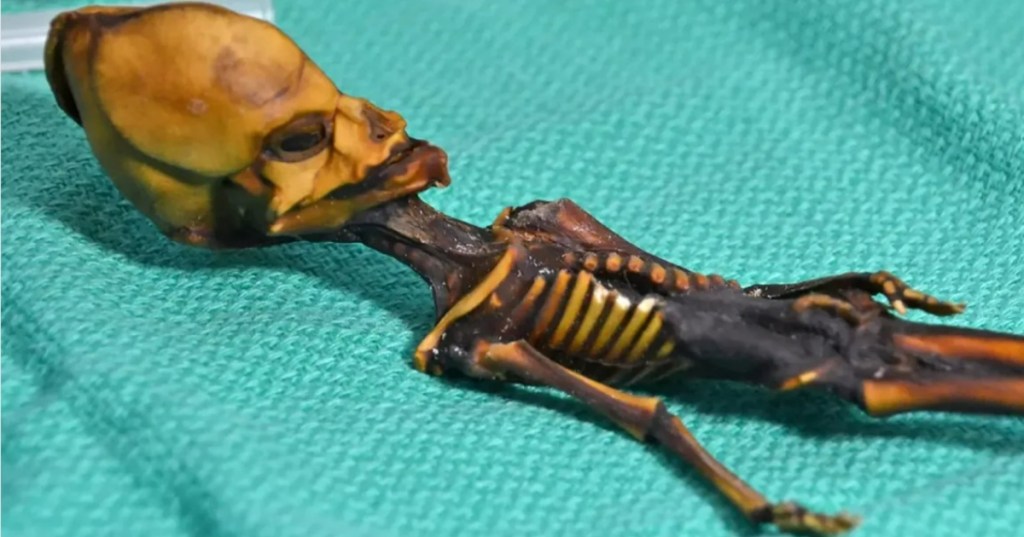The Atacama Skeleton, an unusual 6-inch-long mummified skeleton, has been a source of controversy since its discovery in 2003. Experts continue to debate nearly everything about the specimen, found in Chile’s Atacama Desert, from its species to scientific testing. What makes these bones so special?
Photo Credit: IFLSCIENCE
The Atacama Skeleton nicknamed “Ata,” has an unusually long skull, giant eye sockets, and only 20 ribs instead of 24. When it appeared online, many claimed it was an extraterrestrial alien, bolstered by the 2013 documentary Sirius claiming it was 1,000 years old. This eventually proved false, but the rumors around Ata had only just begun.
Even the skeleton’s discovery is sketchy. It’s believed treasure hunter Oscar Muñoz found the remains, wrapped in a white cloth inside a leather pouch, near an abandoned church in a ghost town called La Noria. According to The New York Times, it popped up years later as part of a private collection, and the Chilean National Monuments Council alleged that the remains were illegally exhumed and smuggled out of the country.
Despite ethical arguments about testing a potentially stolen artifact, Ata underwent genetic analysis in 2018. They concluded it was a premature female human fetus of South American descent and was 500 years old or less.
Photo Credit: Pexels
The skeleton’s DNA contained genes associated with malformation, premature joint fusion, and dwarfism, which likely explains her unusual appearance. However, these findings were also met with criticism. Other researchers claimed that Ata’s deformations were likely due to complications during pregnancy, birth, or mummification, and not genetics, while another group argued the tests themselves lacked scientific reasoning for exhumation.
Alien, or fetus, stolen, or found, it seems this skeleton contains endless bones of contention.
